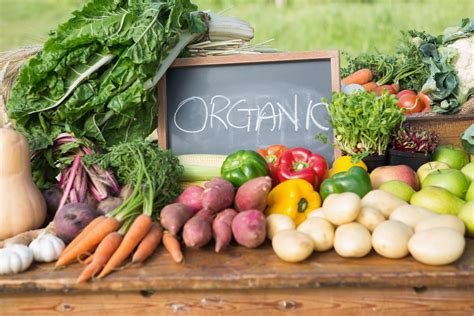Gardening for Beginners: Tips for Starting Your Green Thumb Journey
Are you ready to embark on your green thumb journey? Gardening can be a rewarding and fulfilling hobby, but for beginners, it can also be a bit daunting. In this blog post, we’ll provide you with the essential tips and knowledge you need to kickstart your gardening adventure. From choosing the right plants for beginners to understanding soil types and preparation, we’ve got you covered. We’ll also discuss the importance of essential gardening tools and equipment, proper watering and irrigation techniques, as well as the role of sunlight and shade in gardening. Additionally, we’ll guide you through creating a successful garden layout, integrating organic fertilizers and composting, and managing common pests and diseases. Lastly, we’ll dive into seasonal gardening tips, plant care, and how to harvest and preserve your bountiful garden. So, grab your gardening gloves and let’s get started!
Choosing the right plants for beginners
When it comes to gardening for beginners, choosing the right plants is crucial for success. It’s important to start with plants that are easy to care for and resilient, so that you can gain confidence and experience as you learn the ropes of gardening.
One of the best options for beginners is to choose low-maintenance plants that are hardy and forgiving. Look for plants that don’t require a lot of attention or specific growing conditions, such as succulents, herbs, and native plants.
Another important factor to consider when choosing plants for beginners is the growing zone in which you live. It’s important to select plants that are well-suited to your climate and growing conditions, as this will increase the likelihood of success and reduce the amount of effort required to maintain your garden.
Additionally, consider the amount of sunlight and space available in your garden. Some plants require full sun, while others thrive in partial or full shade. Make sure to select plants that are compatible with the amount of sunlight that your garden receives, and that you have enough space to accommodate their growth.
Essential gardening tools and equipment
When it comes to gardening, having the right tools and equipment can make all the difference. Essential gardening tools such as a trowel, hand pruners, and a garden hoe are must-haves for any gardener. These tools are essential for tasks such as planting, pruning, and weeding. A trowel is perfect for digging small holes for plants, while hand pruners are great for cutting back overgrown plants. A garden hoe is essential for keeping your garden beds free from weeds.
Another important piece of equipment that every gardener should have is a watering can. This is especially important for beginners who may not have access to a hose or irrigation system. A good quality watering can make it easy to water plants efficiently without wasting water.
For larger gardens, a wheelbarrow is an essential piece of equipment. This handy tool can be used for transporting soil, mulch, or plants around your garden. It can also be used for collecting garden waste such as weeds and prunings, making it an indispensable tool for any gardener.
One often overlooked gardening tool is a garden fork. This tool is essential for loosening compacted soil, aerating compost, and turning over soil in garden beds. It’s a versatile tool that can be used for a wide range of gardening tasks and is a great addition to any gardener’s toolbox.
Understanding soil types and preparation
Understanding soil types and proper preparation are crucial elements in successful gardening. The type of soil in your garden can have a big impact on the health and growth of your plants. There are three main types of soil – sand, silt, and clay, each with their own unique properties. Sand is well-draining but does not hold nutrients well, silt is smooth and retains moisture but can become waterlogged, and clay is heavy and dense, often holding too much water and not allowing for proper aeration. It’s important to take the time to understand the type of soil in your garden before planting.
Once you understand the type of soil you are working with, preparing it properly can make a world of difference. Adding organic matter such as compost, manure, or shredded leaves can help improve the texture and fertility of the soil. This will help create a healthy environment for your plants to grow and thrive. Mixing in amendments such as perlite or vermiculite can also help improve drainage and aeration in heavy clay soils.
Another important aspect of soil preparation is testing the pH levels of your soil. Different plants thrive in different pH levels, so it’s important to know what you are working with. You can easily test your soil with a kit from your local garden center or have a professional soil test done. Based on the results, you can make adjustments to the pH levels by adding lime to raise pH or sulphur to lower it.
Understanding soil types and proper preparation may require some time and effort, but it is well worth it. By taking the time to understand and improve your soil, you will be setting the stage for a successful and bountiful garden.
Tips for proper watering and irrigation
Proper watering and irrigation are essential for the health and success of your garden. Overwatering can lead to root rot and other problems, while underwatering can result in wilting and stunted growth. It’s important to find the right balance for each type of plant in your garden.
One important tip for proper watering is to water deeply and infrequently. This encourages the plants to develop deep root systems, making them more resilient during dry periods. It’s better to give plants a good soak once a week rather than a little water every day.
Another key tip is to water in the morning rather than the evening. This allows the foliage to dry out during the day, reducing the risk of fungal diseases. It also ensures that the plants have access to water throughout the day when they need it most.
Finally, it’s important to use the right watering tools for the job. A soaker hose or drip irrigation system is more efficient and effective than a sprinkler, especially for larger gardens. These tools deliver water directly to the roots, minimizing waste and maximizing the plants’ access to water.
The importance of sunlight and shade
Understanding the importance of sunlight and shade is essential for successful gardening. Sunlight provides the energy that plants need to photosynthesize and grow, while shade offers relief from intense heat and can protect delicate plants from sunburn.
Plants that require full sunlight, such as tomatoes and peppers, need at least 6-8 hours of direct sun each day to thrive. On the other hand, shade-loving plants like ferns and hostas prefer to be shielded from the harsh midday sun.
It’s important to observe the sunlight patterns in your garden throughout the day to determine which areas receive the most sun and which are shaded. This will help you plan the layout of your garden and choose the best locations for your plants.
In addition to providing energy for plant growth, sunlight also has a direct impact on the flavor and ripening of fruits and vegetables. Without adequate sunlight, tomatoes may struggle to ripen properly and herbs may become leggy and less flavorful.
How to create a successful garden layout
When creating a successful garden layout, it is important to consider the size and shape of your garden space. Take note of any existing features such as trees, shrubs or structures that may impact the layout. It’s also important to think about the purpose of your garden – whether it’s for growing vegetables, flowers, or simply for relaxation.
Next, consider the placement of your plants in the garden layout. Take into account the sunlight and shade requirements of each plant, as well as their height and spreading habits. Group plants with similar needs together to create a more efficient garden layout.
Another important aspect of a successful garden layout is the pathways and access points. Ensure that there are clear pathways to navigate through the garden, as well as easy access to all areas for planting, watering, and maintenance.
Lastly, when creating a garden layout, it’s essential to consider the overall aesthetic and design of the space. Incorporate elements such as color, texture, and balance to create a visually appealing garden that is both functional and beautiful.
Integrating organic fertilizers and composting
Integrating organic fertilizers and composting into your gardening routine is a great way to promote healthy and sustainable growth for your plants. Organic fertilizers, such as compost, manure, and fish emulsion, provide essential nutrients to the soil without the use of harmful chemicals. By incorporating these natural fertilizers into your garden, you can improve the overall health of your plants and the environment.
Composting is another effective way to enrich your soil and reduce waste. By creating a compost bin in your backyard, you can recycle food scraps, yard waste, and other organic materials into nutrient-rich soil conditioner. This not only reduces the amount of waste sent to landfills, but also provides a cost-effective and eco-friendly solution for fertilizing your garden.
When integrating organic fertilizers and composting into your gardening routine, it’s important to consider the specific needs of your plants. Some plants may require different levels of nutrients, so it’s essential to tailor your fertilizer and compost application to meet these needs. Additionally, proper monitoring and regular turning of the compost pile are essential to ensure that the organic materials are breaking down effectively.
Overall, integrating organic fertilizers and composting into your gardening practices offers a sustainable and natural approach to promoting healthy plant growth. By making use of these eco-friendly methods, you can create a thriving garden while minimizing your impact on the environment.
Common pests and diseases in gardening
Gardening can be a fulfilling and rewarding hobby, but it’s not without its challenges. One of the most common issues that gardeners face is dealing with pests and diseases that can wreak havoc on their plants. It’s important to be able to recognize the signs of infestation or infection early on so that you can take the necessary steps to protect your garden.
One of the most common pests in gardening is the aphid, a tiny insect that feeds on the sap of plants and can cause damage by stunting growth and spreading viruses. Slugs and snails are also common pests that can devour leaves and stems of plants, while whiteflies can cause yellowing and wilting of foliage.
When it comes to diseases, powdery mildew is a common problem that affects a wide range of plants, leaving a white powdery substance on the leaves. Botrytis, or gray mold, is another fungal disease that can cause decay of flowers, fruits and vegetables. It’s important to practice good garden hygiene and keep an eye out for any signs of pests or diseases.
Prevention is key when it comes to dealing with pests and diseases in the garden. Choosing resistant plant varieties, practicing good crop rotation, and maintaining proper soil and plant health are all important measures to take. In some cases, organic pest control methods such as introducing beneficial insects or using neem oil can help to manage pest infestations.
Seasonal gardening tips and plant care
As the seasons change, so do the needs of your garden. It’s important to adjust your gardening routine to accommodate the specific requirements of each season in order to ensure the health and vitality of your plants.
During the spring, it’s important to focus on planting and sowing seeds for the coming months. The soil should be prepared by clearing away any debris and adding organic matter to nourish the soil. It’s also a good time to start thinking about pest control and disease prevention, as the warmer weather can bring an increase in garden pests.
Summer brings the need for regular watering and managing the potential for drought. Proper irrigation techniques are essential during this time, as well as providing shade for more sensitive plants. Additionally, keeping an eye out for signs of heat stress in your plants is crucial for their well-being.
As the weather begins to cool in the fall, it’s important to start preparing your garden for the winter months. This includes cleaning up any remaining plant material, mulching to protect the soil, and planting cover crops to enrich the soil. It’s also a good time to start planning and preparing for any changes or additions to your garden for the coming year.
Harvesting and preserving your bountiful garden
After months of hard work, your garden is finally bountiful with fresh fruits, vegetables, and herbs ready to be harvested. Proper harvesting and preserving techniques are essential to ensure that you can enjoy the fruits of your labor for months to come.
When it comes to harvesting, timing is key. It’s important to harvest your crops at the right time to ensure optimal flavor and texture. For example, tomatoes should be harvested when they are fully colored and slightly firm, while herbs are best harvested before they flower for maximum flavor. Be sure to use sharp pruning shears or scissors to avoid damaging the plant and always harvest in the morning when the plants are at their most hydrated.
Once you’ve harvested your crops, proper storage and preservation techniques are crucial for extending their shelf life. Canning, freezing, and drying are common methods for preserving produce. For example, tomatoes can be canned into sauces or salsa, while herbs can be dried and stored in airtight containers for later use. When storing produce, it’s important to keep them in a cool, dark place to prevent spoilage and retain their flavor and nutrients.
Preserving your bountiful garden not only allows you to enjoy your harvest long after the growing season has ended, but it also helps reduce food waste and allows you to savor the fruits of your labor for months to come.
Frequently Asked Questions
What are some tips for choosing the right plants for beginners?
Beginners should start with easy-to-grow plants such as herbs, tomatoes, and lettuce. These plants are low-maintenance and perfect for learning the basics of gardening.
What are some essential gardening tools and equipment for beginners?
Beginners should invest in basic tools such as a hand trowel, pruners, gloves, a watering can, and a garden hose. These tools will help with planting, watering, and maintaining the garden.
How important is understanding soil types and preparation for gardening?
Understanding soil types and proper preparation is crucial for successful gardening. Different plants thrive in different soil types, so it’s important to test and amend the soil as needed.
What are some tips for proper watering and irrigation in gardening?
It’s important to water plants deeply and less frequently, rather than shallow and often. Proper irrigation systems such as drip irrigation can help conserve water and ensure plants are adequately hydrated.
Why is the importance of sunlight and shade in gardening?
Sunlight is essential for plant growth, as it provides energy for photosynthesis. Understanding the sunlight and shade patterns in your garden will help you place plants where they’ll thrive.
How can beginners create a successful garden layout?
Beginners should start small and plan their garden layout based on plant requirements and space availability. Grouping plants with similar needs together can help simplify care and maintenance.
What are some tips for integrating organic fertilizers and composting into gardening?
Organic fertilizers such as compost, animal manure, and worm castings can enrich the soil and improve plant growth. Composting kitchen scraps and yard waste is also a sustainable way to create nutrient-rich soil amendments.
What are some common pests and diseases in gardening and how can they be managed?
Common garden pests and diseases include aphids, powdery mildew, and tomato hornworms. Using natural predators, practicing crop rotation, and using organic pest control methods can help manage these issues.
What are some seasonal gardening tips and plant care practices?
Seasonal gardening tips include planting cool-season and warm-season crops at the right time, protecting plants from extreme weather, and providing extra care during peak growing seasons.
What are some tips for harvesting and preserving the bountiful garden produce?
Harvesting produce at the peak of ripeness, proper storage, and preservation methods such as canning, freezing, and drying can help gardeners make the most of their bountiful harvests.






